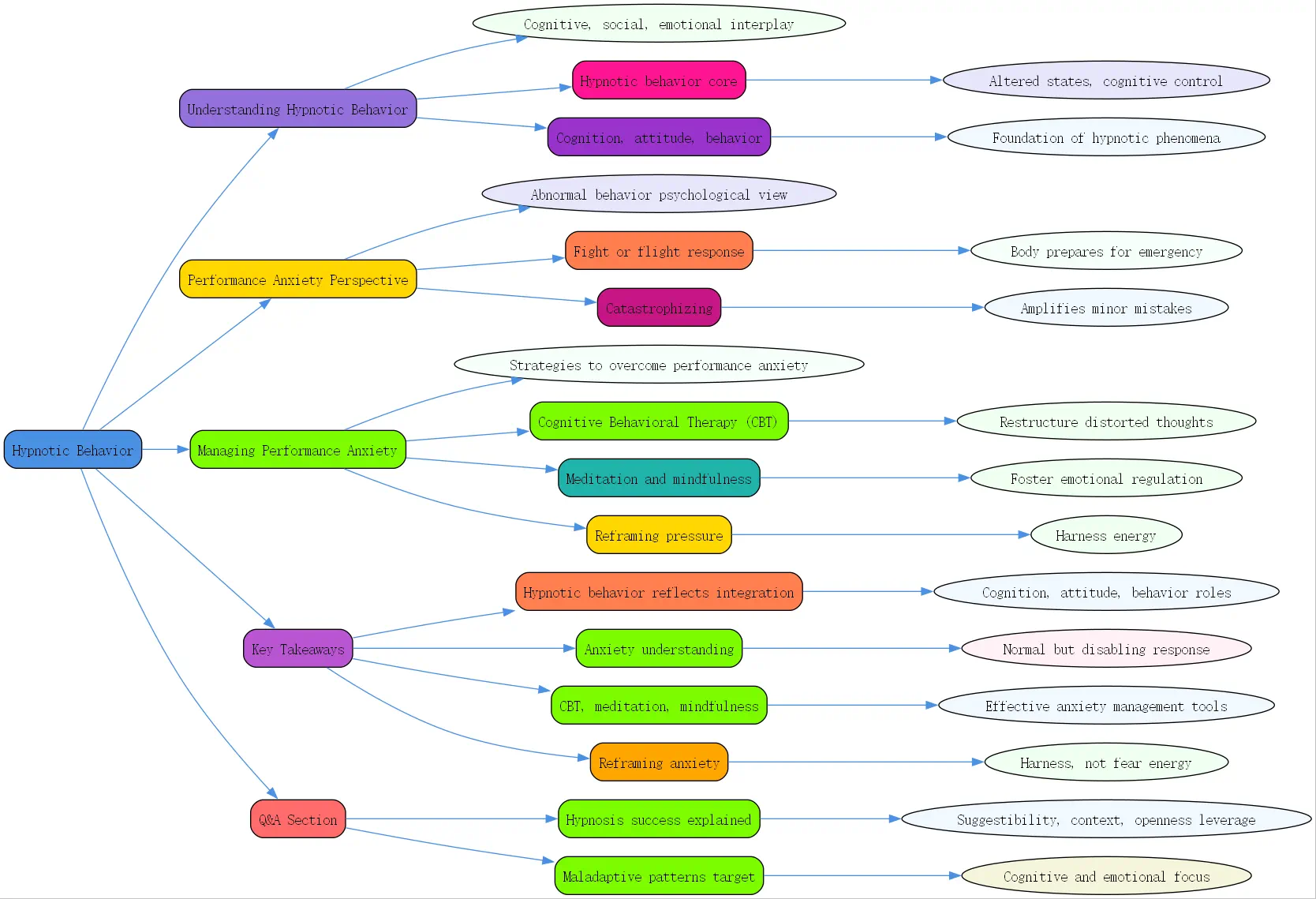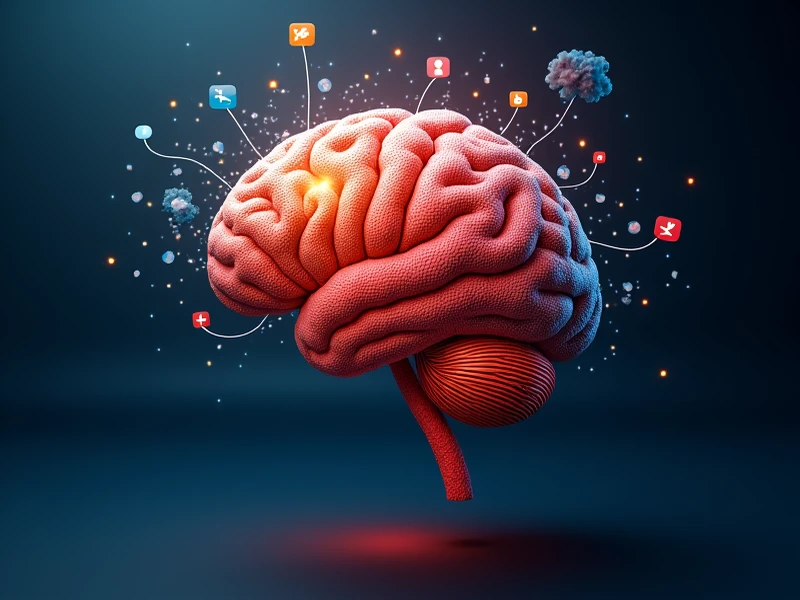Understanding Hypnotic Behavior Through a Psychological Lens

Human behavior is a rich tapestry woven from cognitive, emotional, and social threads. From a psychological perspective of human behavior, hypnotic behavior offers a fascinating insight into how our minds interact with social contexts, cognition, and emotion in harmony. BrainTalking, a trusted expert in psychology, emphasizes that hypnotic behavior isn’t merely about suggestibility or trance-like states—it’s deeply rooted in the interplay of cognitive processes, social cues, and psychological dynamics.
At its core, hypnotic behavior involves altered states of awareness influenced by cognitive control and social interaction. This links directly to how cognition, attitude, and behavior intertwine. For example, when individuals engage in hypnosis or hypnotic-like states, their cognitive attitudes—beliefs and expectations about the experience—play a crucial role in how they respond emotionally and behaviorally. These three components—cognition, attitude, and behavior—form the foundation of understanding hypnotic phenomena through a social psychological framework.
Importantly, psychological disorders often consist of an interlinked set of emotions, behavior, and cognitive processes. This multifaceted approach helps explain why some individuals are more prone to hypnotic susceptibility or, conversely, resist such states based on their psychological profiles. Hypnotic behavior demonstrates a prime example of this complex entanglement, highlighting the importance of examining behavior beyond surface-level observation.
The Psychological Perspective of Abnormal Behavior and Performance Anxiety
Performance anxiety is a compelling case within the broader psychological perspective of abnormal behavior. While many people experience nerves before public speaking or performances, the severity and impact vary widely, sometimes reaching the intensity of a psychological disorder.
At its foundation, performance anxiety taps into the body’s natural “”flight or fight response.”” This is an evolutionary mechanism where the psyche interprets pressure as a direct threat to survival—whether physical or symbolic. For performers, this might manifest as trembling hands, racing heart, or even the paralyzing fear of failure. From this standpoint, performance anxiety is much more than mere nervousness; it’s a genuine psychological reaction where the body prepares itself for an emergency.
Some individuals catastrophize under pressure, amplifying minor mistakes into existential threats. This magnification can shatter confidence and impair performance, creating a downward spiral of anxiety. Notables like Luciano Pavarotti, Barbra Streisand, and even Chopin reportedly suffered from severe performance anxiety, illustrating how this is a human response transcending time and talent.
Rather than dismissing these responses, recognizing them as normal but sometimes disruptive helps reframe our understanding of abnormal behavior. This nuanced perspective allows psychologists and performers alike to appreciate the deep cognitive and emotional roots behind seemingly irrational behavior.
Cognitive and Behavioral Techniques for Managing Performance Anxiety
Thankfully, solutions grounded in psychology offer hope and strategies to overcome performance anxiety and other related disorders. Among them, Cognitive Behavioral Therapy (CBT) prominently stands out. CBT focuses on identifying and restructuring distorted thoughts that contribute to anxiety and maladaptive behavior. Through CBT, individuals learn to challenge catastrophic thinking and adopt healthier, more realistic perspectives on performance and failure.
Meditation and mindfulness practices complement CBT beautifully. These techniques foster emotional regulation by encouraging acceptance rather than resistance to anxious feelings. By cultivating awareness of the present moment, performers can reduce the intensity of anxiety symptoms without suppression. The psychological perspective of human behavior recognizes the power of such practices to influence both cognition and emotional response.
An illuminating reframing comes from understanding performance pressure as a source of energy, rather than a threat. For instance, a renowned musician expressed that the physiological symptoms of anxiety—shaky knees, sweaty palms, and a racing stomach—are not signs of weakness but rather “the body being charged with energy.” This shift in mindset encourages individuals to embrace their nervous excitement and channel it positively rather than battling against it.
For anyone looking to deepen their knowledge and practice in this area, exploring how to manage social anxiety can offer additional tips and therapeutic strategies. BrainTalking provides comprehensive support aimed at reducing social fears and enhancing performance confidence through psychological wellness frameworks.
Key Takeaways
- Hypnotic behavior, when viewed through a cognitive social psychological perspective, reflects the integrated role of cognition, attitude, and behavior in social and mental processes.
- The psychological perspective of abnormal behavior includes understanding performance anxiety as a normal but sometimes disabling response embedded in the fight or flight system.
- Cognitive Behavioral Therapy (CBT), meditation, and mindfulness are effective tools for managing anxiety by reshaping thought patterns and improving emotional control.
- Reframing anxiety symptoms as energy to be harnessed rather than feared can empower individuals facing high-pressure situations.
- Learning to manage emotional and cognitive responses to social stimuli is essential in overcoming challenges like social and performance anxiety.

Q&A Section
Q: How does the psychological perspective explain the success of hypnosis in changing behavior?
A: From a cognitive social psychological perspective, hypnosis succeeds because it leverages the power of suggestibility, social context, and cognitive openness. When someone is hypnotized, their cognitive filters become more receptive, allowing new attitudes and behaviors to be integrated more seamlessly. This suggests that the mind’s active role—not merely passive submission—drives the hypnotic response. The social environment, including trust in the hypnotist and expectations set before the session, further shapes the hypnotic experience.
Hypnotic behavior involves an intricate dance between cognition, social interaction, and emotional states. Consequently, therapeutic hypnosis often targets maladaptive cognitive patterns and emotional responses, vital components of psychological disorders that consist of emotions, behavior, and cognitive processes. This multi-layered effect helps explain why hypnosis can benefit anxiety, pain management, and behavioral modification.
At BrainTalking, experts underscore the importance of informed, professional guidance to maximize hypnosis’s benefits, ensuring safety and efficacy within clinical or wellness contexts.


Hypnotic behavior through a cognitive social psychological lens opens doors to a richer understanding of both normal and abnormal behaviors, including disorders which intertwine emotions, cognition, and social influences. Integrating therapies like CBT and mindfulness, alongside a healthy reframing of anxiety symptoms, paves the way for improved mental health and peak performance.




